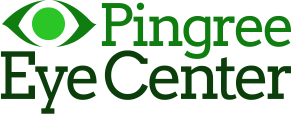LASIK (laser in situ keratomileusis) is a surgical procedure to correct refractive errors such as nearsightedness, farsightedness and astigmatism. It uses a laser to shape or sculpt the front surface of the eye, the cornea. This sculpting is an attempt to optimize the way the eye focuses light on to the back of the eye, thereby creating clear vision.
LASIK makes it possible for most people to perform their everyday activities without the need for spectacle correction. In fact, more than 90% of people who get LASIK have vision that is 20/40 or better at distance. In Utah, the driver’s license requirement for standard driver’s license is vision of 20/40 or better in at least one eye. However, LASIK does not correct presbyopia, or the loss of ability to change focus from far to near. So, most people over 40 will require reading glasses after surgery.
What is the procedure for LASIK?
With the patient reclining, the surgeon numbs the patients eye with some eyedrops. A special surgical blade (nicrokeratome) is used to partially remove a small amount of corneal tissue. After positioning the laser directly over the patient’s eye, the surgeon uses an excimer laser to sculpt out a predetermined curvature on the corneal tissue. He then replaces the flap of corneal tissue previously removed. It adheres to the rest of the corneal within 2-5 minutes. Stitches are not necessary in this procedure. Once the surgeon starts the procedure, most patients are finished in less than 10 minutes (even if both eyes are done).
What are the risks of LASIK?
LASIK has been performed on millions of patients for more than 10 years. The complication rate is less than 2%. As with any surgical procedure, there could be infections or inflammation, both of which can usually be cleared up with medication. Further treatment could be required if there are problems with the corneal flap. There is also the possibility that vision could end up worse than before the surgery or not correctable to 20/20. More common side effects are glare/halos or starbursts around lights that often clear after a few months. There is often some temporary dryness. Rarely, the glare problems and dryness can be permanent.
Some patients may require a ‘touch up’ or re-treatment to get the desired acuity. A ‘touch up’ is more common with those whose had large refractive errors (large glasses prescriptions) before the procedure. Around 10% of LASIK patients in the U.S. require a ‘touch up’.
What is custom LASIK?
Custom LASIK, or wavefront, uses a 3D analyzer to more accurately measure an individual’s aberrations or imperfections in the way the eye receives light. Custom LASIK treats these aberrations and, therefore, often minimizes the glare effect of conventional LASIK. Dr. Pingree performs Custom LASIK.
